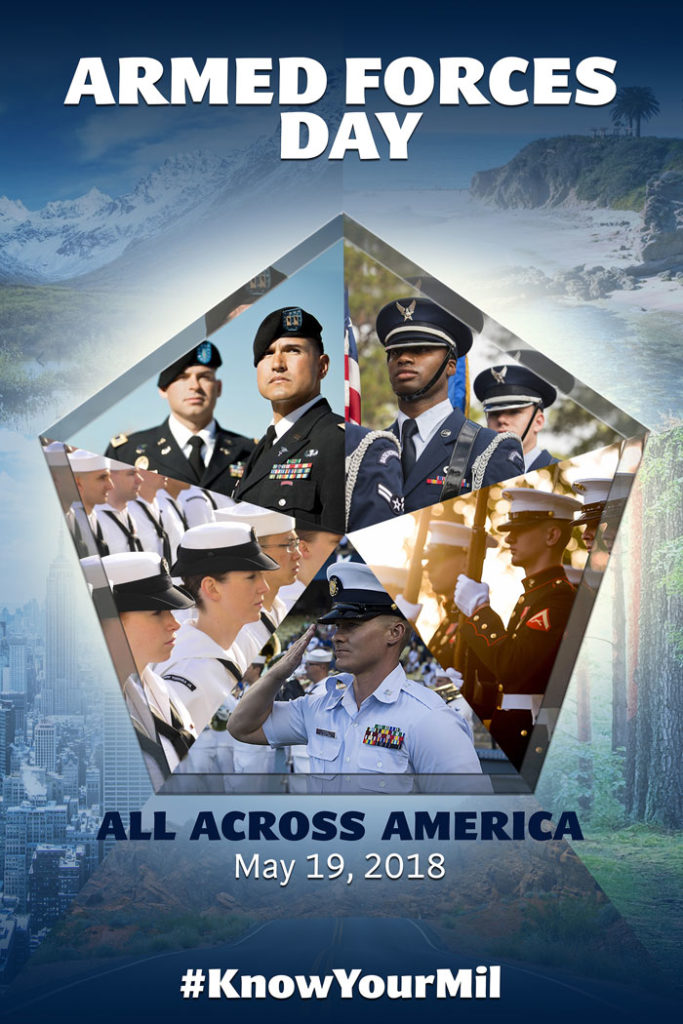Saturday, May 19, 2018, is Armed Forces Day. It’s a day to “participate in exercises expressive of our recognition of the skill, gallantry, and uncompromising devotion to duty characteristic of the Armed Forces in the carrying out of their missions,” as President Harry Truman put it in 1950.
BLADE is doing its part by taking a look back at the knives that accompanied those in uniform during World War II. When BLADE writes about lives depending on knives, it’s not only referring to the user. If a soldier depends on a knife, then citizens also depend on that knife.
Editor’s note: The following is by Richard D. White.
MARK 1
Featuring a 5-to-5.25-inch flat-ground blade, the Mark 1 utility knife was adopted by the Navy as a survival-type knife with sheath. Every sailor who worked “topside” was issued a fixed blade for cutting ropes/line.
The Mark I probably the World War II military knife encountered most in the marketplace. There are a significant number of different varieties—some historians say as many as 42. Camillus, Colonial, Geneva Forge, Pal, Robeson, KA-BAR, Boker and Kinfolks made them.
Blade finishes included polished, blued and Parkerized. Pommels were the traditional bird’s-beak design or flat of steel, plastic or wood. Handles generally were stacked leather—some with fiber spacers, some without. Mark 1’s by Colonial had injected plastic handles.
MARK 2
The Mark 2 was made available to combat soldiers in 1943. It was 12 inches long with a 7-inch blade. The handle was stacked leather, generally grooved. It was held in place with a steel washer pinned to the tang. Examples are plentiful and often were photographed hanging from the belts of soldiers who fought in the South Pacific Islands.
KA-BAR, Robeson, Pal, Utica, Ontario and Camillus were the major manufacturers of the Mark 2. Variations included different spacer colors, marks/stamps, pommel thicknesses and materials, piening vs. welding of the pommels, blue vs. polished blades, and smooth vs. grooved handles.
M3
The M3 was designed to meet a shortage of combat knives, especially in early 1942. According to Frank Trzaska, a military knife historian, the decision to design the M3 rather than continuing to produce the Mark 2 was based on a U.S. steel shortage.
The M3 was selected because it was easier to manufacture and had a thinner blade, which was 6.75 inches and sharpened the full length, excluding the stamped tang area. The top edge was sharpened about a third of the blade length. The guard was thick steel angled on top to form a thumb rest.
The handle was stacked leather with a series of cut grooves. Originally there were supposed to be eight grooves, but some companies generally used to six to seven. The grooves provided better purchase. The pommel was flat steel and pinned to the tang.
The M3 had many variations, including added spacers at the guard and pommel end, or piening the tang over to hold the pommel in place as opposed to pinning the pommel onto the tang.
GO WESTERN
Any review of World War II military fixed blades must include several examples of Western knives. While some are very rare, such as the L-76, L-77, “Bushman” and USMC parachutist knives, several examples are more ubiquitous.
One is the “Shark.” Western made two: one with a 6-inch blade, the G46-6, and one with a 5-inch blade, the G46-5. Both had huge blood grooves, stacked leather handles, and several different guards and pommels. Both came with flat steel, aluminum or mottled-brown-plastic pommels.
Guards were double steel, the very rare brass or plastic like the pommels. Many times the guards and pommels were mixed and matched. The smaller Sharks were issued to Navy and Army Air Corps pilots as a bailout knife. Blade finishes were blued and polished.
Another Western World War II fixed blade was the 46-8, a huge, impressive combat knife with an 8-inch blade. It was officially known as the G46. The blade had a massive blood groove and upswept false edge on the spine. The knife featured stacked leather handles, double-sided steel guards, and flat steel pommels. Most had blued blades, though some were polished.
225-Q
The Cattaraugus 225-Q had one of the strongest blades of any World War II combat knife. Many observers say it was for quartermasters, with the “Q” standing for quartermaster. As the thinking goes, the rather stout blade was designed to open various wooden crates—an important part of the quartermaster’s job—and the triple steel pommel was used to nail the crates closed.
Still others say the knife was designed for and used by U.S. special operatives during World War II. As with any military knife, be careful not to fall victim to the opinions of so-called experts, especially when they attribute particular knives to units like the Devils’ Brigade, Commandos, OSS, Underwater Demolition Team, etc.
Some military knives—not just the 225Q—were stamped very lightly, while others were deeply stamped.
Keep Learning About Knife History
BLADE’s annual Knife Guide Issue features the newest knives and sharpeners, plus knife and axe reviews, knife sheaths, kit knives and a Knife Industry Directory.Get your FREE digital PDF instant download of the annual Knife Guide. No, really! We will email it to you right now when you subscribe to the BLADE email newsletter.
Click Here to Subscribe and get your free digital 2022 Knife Guide!
